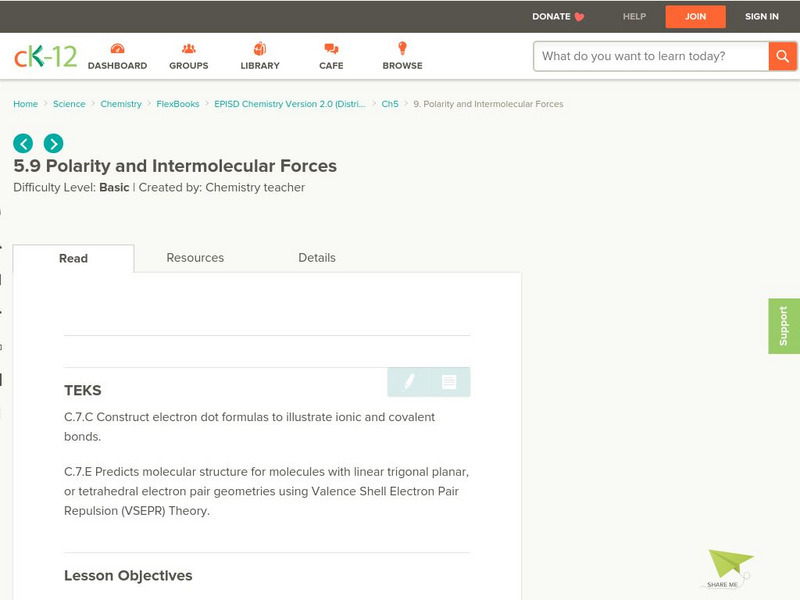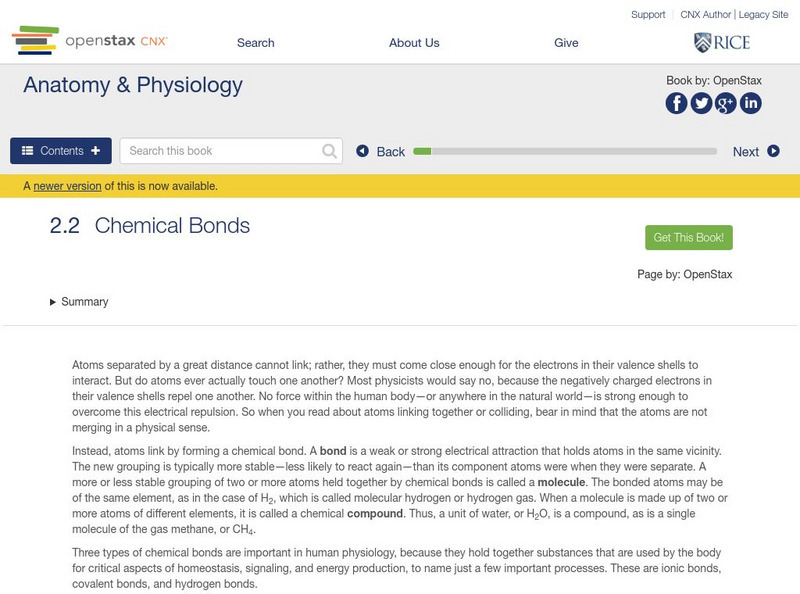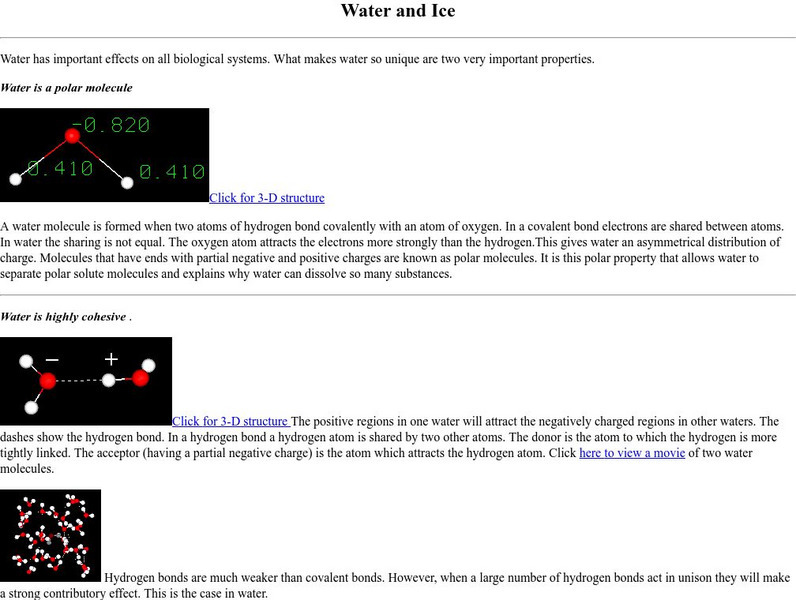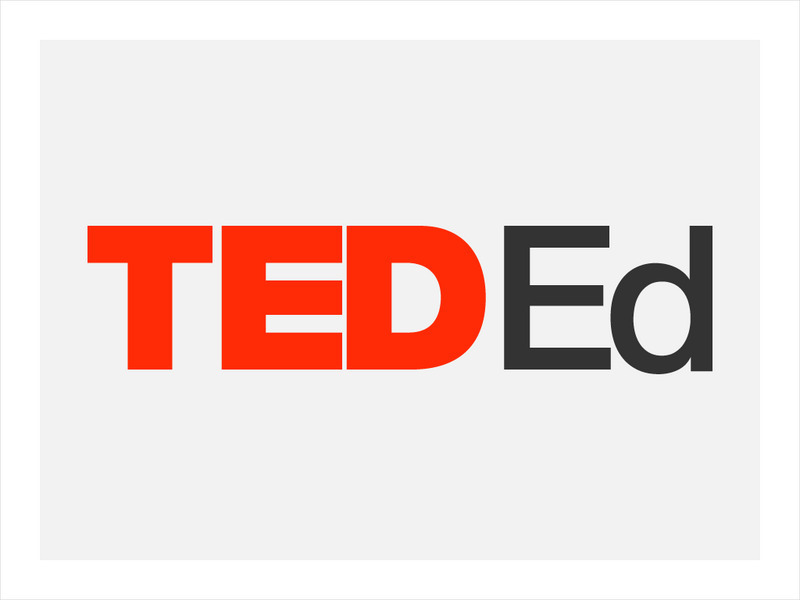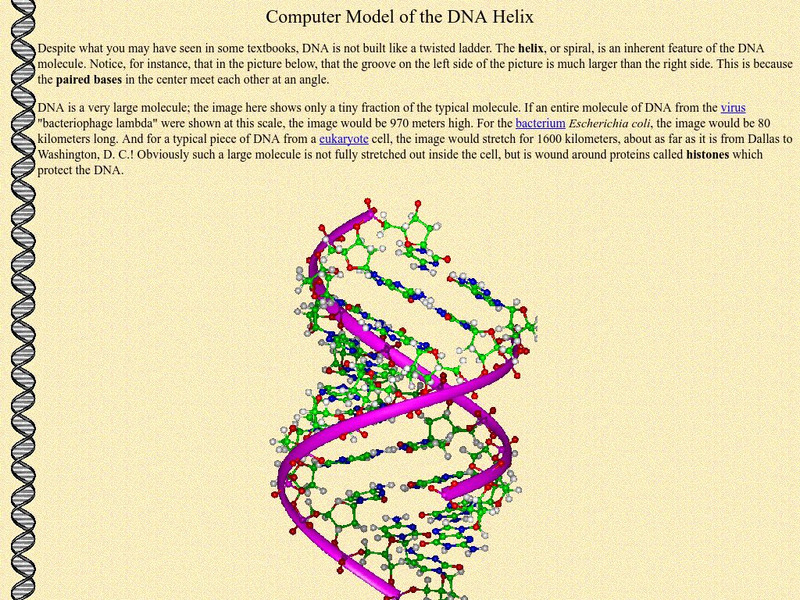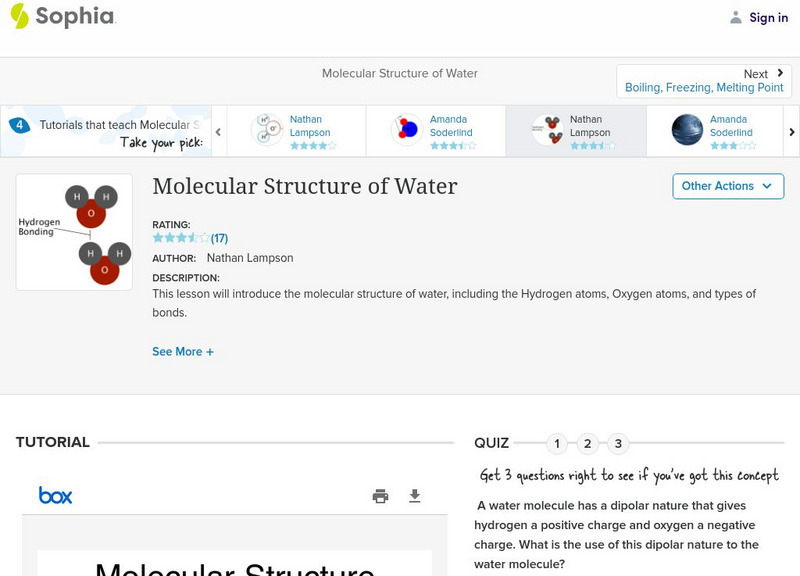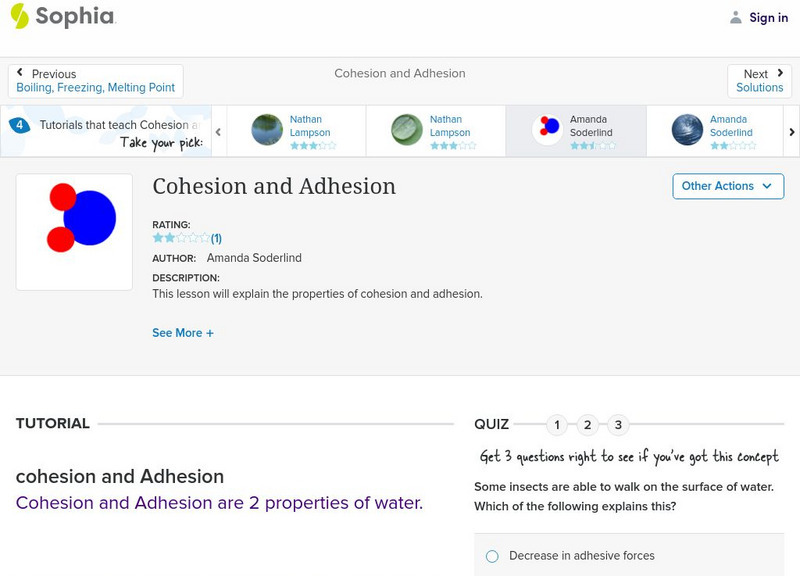Curated OER
Intermolecular Forces
In this intermolecular forces activity, students perform a simple experiment with water to observe the intermolecular forces that hold water together as they fill a beaker as much as possible. They explain the results of their...
Curated OER
Water: The Neutral Substance
In this water worksheet, students read about hydrogen bonds in water and the differences in electronegativity between the oxygen atom and the two hydrogen atoms in water. Students answer four questions about the structure of water and...
Curated OER
Surface Tension
Students view demonstrations that illustrate the surface tension of water. In this properties of water instructional activity, students observe demonstrations that show how water exhibits surface tension. They explain how the...
Curated OER
IPC Review
Learners discuss the difference between atoms and elements. They analyze how compounds are formed. Students discuss the difference between covalent bonds, hydrogen bonds, and ionic bonds. They review bonding with diagrams, "Atoms or...
Curated OER
Intermolecular Forces
In this compounds worksheet, students identify the main intermolecular force in the given compounds and explain the differences between dipole-dipole forces and hydrogen bonds. This worksheet has 5 short answer questions.
Curated OER
Biology: Protein Study
Learners in pairs, select and view proteins from the Protein Data Bank. After downloading the tutorial and instructions, they identify the protein's structures and primary biological functions. Then, students present their findings to...
CK-12 Foundation
Ck 12: Polarity and Intermolecular Forces
[Free Registration/Login may be required to access all resource tools.] The following online tutorial describes how the electronegativity difference between two atoms in a covalent bond results in the formation of a nonpolar covalent,...
Khan Academy
Khan Academy: Biology: Chemistry of Life: Chemical Bonds
Review over covalent, hydrogen, and ionic bonding in this article. Learn how molecules are held together by chemical bonds.
OpenStax
Open Stax: Chemical Bonds
Learn here about chemical bonds, a weak or strong electrical attraction that holds atoms in the same vicinity.
New York University
New York University: About Water and Ice
Page uses movies and 3D images to explain how properties of water relate to polarity and hydrogen bonding.
TED Talks
Ted: Ted Ed: Why Does Ice Float in Water?
Ever wonder why solid ice floats in liquid water? In this video lecture you will explore the special properties of water. Learn "the science behind how hydrogen bonds keep the ice in your glass (and the polar ice caps) afloat". At the...
University of California
Ucmp: Computer Model of Dna
A slight departure from the classic view of DNA showing that the molecule is not exactly a twisted ladder. Good image and explanation to go with it.
Concord Consortium
Concord Consortium: Stem Resources: Intermolecular Attractions
Learn that boiling point, solubility, and DNA are affect by intermolecular forces in this module. Module includes lessons with questions and animations to explain London dispersion and dipole-dipole attractions. To conclude the lessons,...
Other
What Is Life: Aqueous Solutions
Discussion of water as a solvent. Includes material on hydrogen bonds, hydration, hydrophobic effect, acids, basses, and pH.
Sophia Learning
Sophia: Molecular Structure of Water: Lesson 2
This lesson will introduce the molecular structure of water, including the Hydrogen atoms, Oxygen atoms, and types of bonds. It is 2 of 4 in the series titled "Molecular Structure of Water."
Sophia Learning
Sophia: Molecular Structure of Water: Lesson 3
This lesson will introduce the molecular structure of water, including the Hydrogen atoms, Oxygen atoms, and types of bonds. It is 3 of 4 in the series titled "Molecular Structure of Water."
Sophia Learning
Sophia: Secondary Structure of Proteins
This lesson will explain the secondary structure of a protein.
Sophia Learning
Sophia: Tertiary Structure of Proteins: Lesson 1
This lesson will explain the tertiary structure of a protein. It is 1 of 2 in the series titled "Tertiary Structure of Proteins."
Sophia Learning
Sophia: Cohesion and Adhesion: Lesson 2
This lesson will explain the properties of cohesion and adhesion. It is 2 of 4 in the series titled "Cohesion and Adhesion."
Sophia Learning
Sophia: Biology: Macromolecules: Secondary Structures of Proteins
This lesson will explain the secondary structure of a protein.
Sophia Learning
Sophia: Tertiary Structure of Proteins: Lesson 2
This lesson will explain the tertiary structure of a protein. It is 2 of 2 in the series titled "Tertiary Structure of Proteins."
Sophia Learning
Sophia: Cohesion and Adhesion: Lesson 3
This lesson will explain the properties of cohesion and adhesion. It is 3 of 4 in the series titled "Cohesion and Adhesion."
Curated OER
Science Kids: Science Images: Hydrogen Bonds
A computer generated image showing a 3D model of hydrogen bonds in water.








